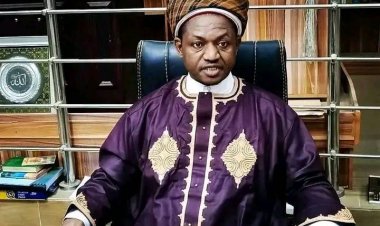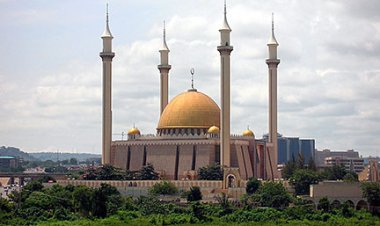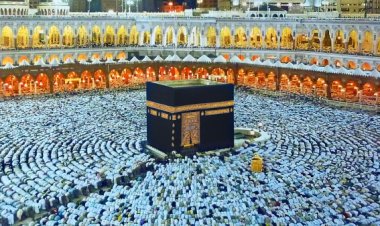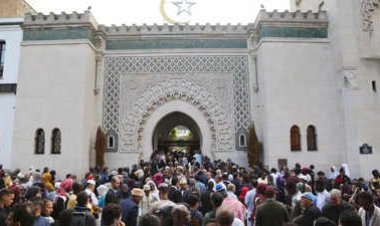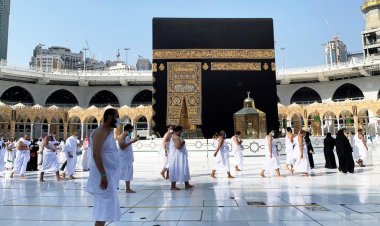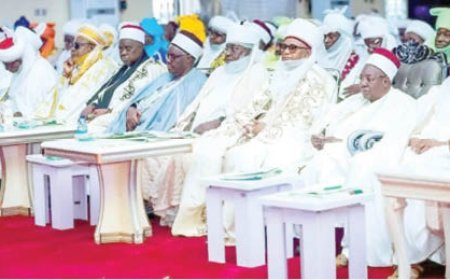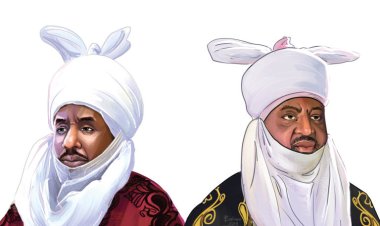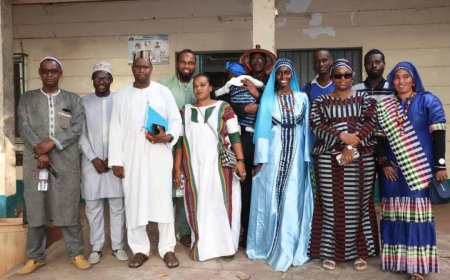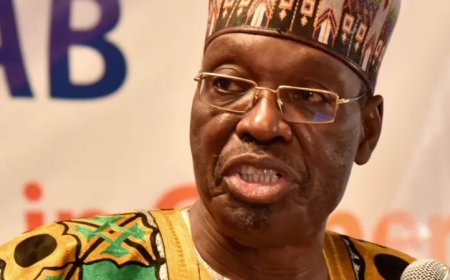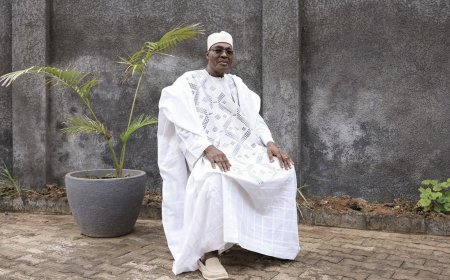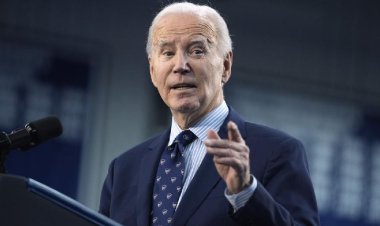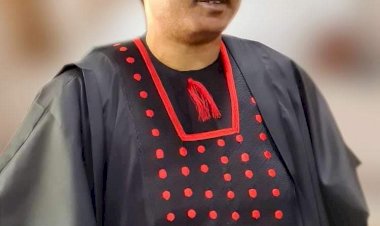BELLO’S CONCEPT OF URBANIZATION OF THE NOMAD AND ITS RELEVANCE TODAY
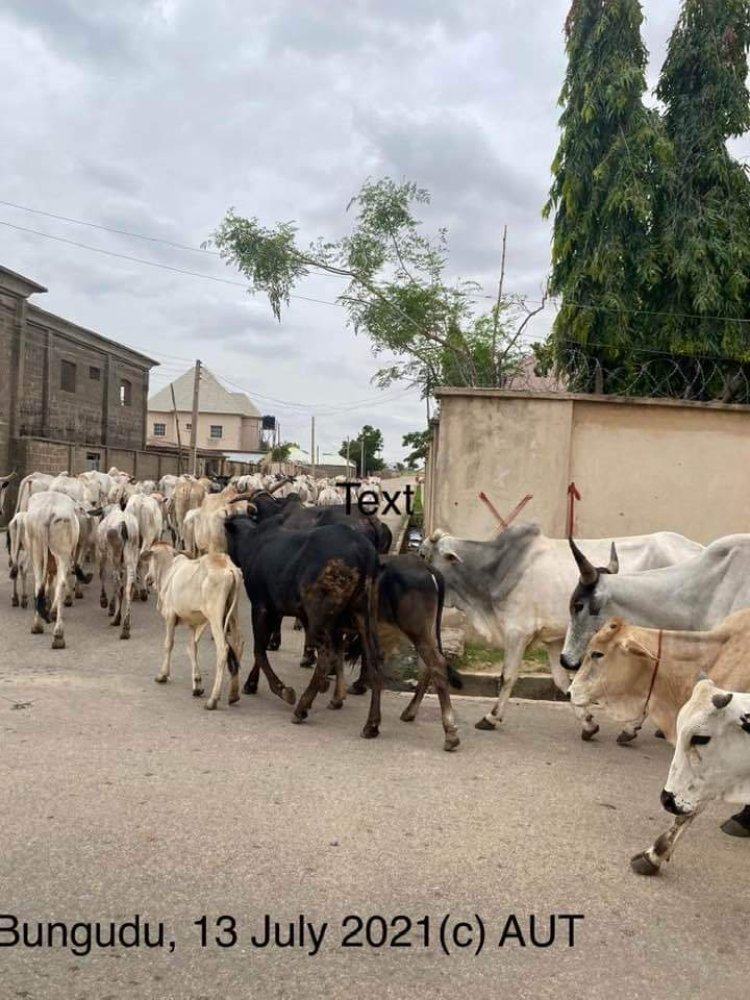
By Aliyu U. Tilde, PhD
The treatise of Sultan Muhammadu Bello that discusses this topic is to be found in his “Jawabun Shafin, wa Khitabun Minna Kafin”, a reply to the enquiry sent him by Muhammad Jailani, the Tuareq Jihadist that was a contemporary and collaborator of Bello, on the stand of Shariah regarding settling his tribesmen, the Tuaregs.
In this paper, an attempt was made to review the views of Muhammadu Bello and cast them against the background of the current need to and the challenges of settle the pastoralist Fulani in Nigeria.
The Relevance of City
In the Jawab, Bello did not hide his dislike for the life of the nomads. Humanity he saw was moving towards urbanization, supporting his argument with the Hadith of Anas, that “people will settle in towns”. Of course, the following decades and centuries saw the establishment of towns like Basrah, Kufah, Fustat, etc., as garrison towns founded by Umar bn. Al-Khattab.
In addition to military expediency, Bello prefers the city because it rhymes more with the collective nature of Islamic sociology that is encouraged by the Holy Prophet. Isolated persons become cheap targets of attacks from both the enemy and the devil, citing the Hadith of Ahmad b. Mani’ on the authority of Ibn Ubadah b. Qusay, that “there are not five households which assembles together and no prayer is called nor is it performed but the devil overcomes them, for the wolf takes the remote ewe-lamb from among the sheep.”
And except where circumstances like fitan obligates, movement of people from town to desert is not permitted, quoting the Hadith of Jabir b. Abdullah, that the Prophet said, “My Allah curse him who is a desert dweller after emigration, three times, save during a feud for verily the desert-life is better than dwelling amidst a feud.”
Bello encouraged the building of towns as fortresses that would protect headquarters, the centre of the Caliphate and doing so is obligatory on the Umma for which a levy could be justified. Giving account of his own effort in this direction, Bello said
“I strove to build cities, and mosques and manifest the liturgical rites (sha’air) of Islam, and to found capitals. I made clear to the people of the towns what religious affairs and worldly interest are obligatory upon them. I entrusted to each and every occupation those capable of taking care of it, such as the office of leadership of congregational prayer, sermon, administration of justice, supervision of public morality, teaching and instruction in the school, military service, blocking the frontiers (of Islam), etc. and such as supporting essential occupations like farming, commerce and other occupations in which lies the interests of the nation.”
Bello’s vision for the rural dwellers is to aggregate them in tribes and cater for them this way:
“It remains my duty to cater for the people of the rural areas, so that I gather every tribe from them under a leader (shaykh) and command them to rally round him. I would appoint a tutor with him to educate their children, and a learned man to act as an imam for their statutory prayers and to teach their students (tullab) and instruct them in all they ought to know in worship and business relations. I would teach them what the people of the desert need in the way of implements and what they should seek to have less of and what they should seek to have much of. So I would prevent them from breeding of large herds of cattle, and I would order them to increase their camels and breed horses and sheep, since that is preparedness for Jihad and the power of the Muslims.”
As a military commander, it is not surprising that Bello disliked the cattle. This is abundantly clear in his reply to Sheikh Jailani. He sees them as dissuading its owners from Jihad and at the same time cannot be used to fight wars, unlike the horses and camels, which he praised.
Bello lamented the love of the Fulani to cattle, which he clearly expressed as he wound up his reply to Jailani:
“This tribe of ours (Fulani) has been infatuated by the love of cattle despite the fact that the Prophet, may Allah bless and grant him peace did not own them. Nay, it is narrated that he slaughtered a cow for his wives. Abu Mansur al-Daylami transmitted on the authority of Anas b. Abbas b. Malik that the Prophet, may Allah bless him and grant him peace, said, ‘My Umma will not suffer humiliation as long as they keep horses picketed as a preparedness to fight their foe. If they forsake this and cling to the tails of cattle, Allah will bring humiliation upon them, and He will not remove it from them until they return to horses.’ … There have come many hadiths reproving cattle. Here is one to suffice you, ‘weakness will not depart from their keepers’, as mentioned, they will turn away from Jihad, and then perish.”
Three Classes of Fulani
In reaction to Bello’s urbanization plan, the Fulani can be divided into three: the immediate followers, the later followers and the forest pastoralists.
The first group are those that fulfilled the urbanization dream of the ‘rural people’ as envisaged by Bello. From Sokoto to Adamawa, the Caliphate in the following 200 years will be replete with rural settlements that have leaders, imams, tutors, students and different trades organized under leadership of people like sarkin pawa, sarkin makera, sarkin malamai and even sarkin Fulani or ardo for his Fulani folks. Bello succeeded in establishing fortresses like Wurno and other towns, where his tribesmen reduced their number of cattle, kept sheep and horses and participated in Jihad.
Perhaps one of the best examples is Bungudu, a Fulani town in Zamfara State, headed by an Emir called Sarkin Fulanin Bungudu. The Fulani there, as in almost all settled Fulani towns in the Northwestern Nigeria, do maintain cows in almost every household to this day. On 13 July, 2021, I had the opportunity to witness these cows—as I used to see in the Caliphate’s headquarters of Sokoto—gather from different households in the morning and, led by shepherd, go out to graze in the surrounding fields until they return in the evening, when each cow would walk back, unaided, into the home of its owner. (See the picture below).
This is the scene every day in the Sokoto City. It also used to be the scene even in large cities like Kano where there were quarters, like Daneji, that harboured Fulani families with their cattle—until recently when development took over the stands.

With the success of the Jihad, a number of Fulani would later join the military and settle down. For the majority of cattle Fulani, however, historians have shown that they did not join the Jihad but preferred to “cling to the tails of their cattle”, with many remaining pagans to this date…or as Bello predicted, “they will turn away from Jihad and then perish.” These cattle Fulani chose to move further into the forests beyond the effective control zone of the Caliphate.
To be fair to the cattle Fulani, the option they had was little. They had three hurdles to cross, none of them short: (1) accept Islam, (2) adopt sedentary life and (3) reduce the size of their herds or abandon the cattle entirely for breeding horses, camels and sheep. All the three demands are not small tasks for a people that are republican by nature.
First, to accept Islam means giving up superstition, adopt a new form of life guided by the rules of the shariah and participate in the Jihad, in which their life can be lost. For those that are Muslims already, this may not be so Herculean as it was for those who were not.
Two, to abandon the forest and settle would mean the end of their herds and reliance on farming, trade or handcraft, all of which the average pastoralist consider less noble to this date. Moreover, it will expose them to taxation and lead to a fast loss of identity—the Fulfulde language.
Finally, the cattle are the only trade the Bororo’en knew and the only asset they had. Reducing their number deliberately would be suicidal as it would lead to the obliteration of their wealth. Breeding horses and camels, as the Tuaregs of Jailani did, could meet the immediate demands of Jihad but beyond the period of Jihad, horses will not be of much economic benefit. They cannot sustain the Fulani people do not eat horses. Breeding sheep, which the Fulani take as a pastime or a complimentary source of income that takes care of emergencies, would be a retrogression to something less valuable.
Two hundred years after Bello, the scepticism of the Fulani have proven to be correct. All Fulani who settled have lost their mother tongue and herds, except the few that can be seen in some urban areas like the ones we describe above. But as Bello rightly predicted, those who continue to own herds, had to live in the forest, alone, unrefined by lack of religion or civilization, and exposed to the vagaries of satan and their enemies, as “the wolf eats from the sheep the one that is distant.”
As a footnote, we must hasten to mention that circumstances have made million of the Bororo’en to settle as a result of military career, scholarship or depletion of their cattle. Even those in the forests today are overwhelmingly practicing Muslims though many remain nominal or pagans.
The Cattle
Let us briefly discuss the relevance of what is the bone of contention between Bello and his tribesmen—the cattle.
To a military commander in premodern societies like Bello, the cattle were an impediment against recruitment of fighters. It is a wealth that ties their owner to the ground, to use a Qur’anic expression. But if Bello were a commander today, he would need personnel carriers, tanks, missiles and fighter jets, not horses; and unless under extreme cases of emergency, he would have a standing army not adhoc fighters among the adults of the population. Finally, cows would be a great asset from whose revenue he would run his administration and finance his army. This is exactly what happened during the colonial administration.
In 1937, exactly 100 years after Bello, the debate over cattle tax, Jangali, was still waging: would the Northern region charge one and a half shillings or two? All the Residents of Native Authorities sent in their contributions, arguing their case passionately, for or against an increase. That is because cattle had become the single most important source of General Tax for their provinces. This was captured by the Resident of Borno in a memorandum he sent to Kaduna on 13th October 1932.
“The matter is of considerable importance in Borno where the Jangali approximates to 66% of the General Tax as compared with 17% in kano and 30% in Sokoto. Even in Adamawa the tax amounts to only 40% of the General Tax.”
It will be interesting to hear what the input for areas like Plateau was. Did the Resident dismiss cattle and their owners as some of their successors do today? In the memorandum that the then Acting Resident of Plateau Province sent to the Secretary, Northern Provinces, Kaduna, on 21st October 1932, he argued for a decrease in Jangali, given the loss of value of cattle in those years as a result of the Depression, in order not to drive the ‘Fillani’ away, something that will lead to the depletion of the livestock population and a loss of valuable revenue to Government:
“If there is reason to think that this decrease in numbers may continue in annual progression it would serve to be to the advantage of both Government and of the Native Administrations – even though the immediate loss of revenue would be in many cases inconvenient – to reduce the incidences of tax in proportion to the reduction in capital and annual value in order to retain a contented Fillani population and to prevent under depletion of the livestock of the country. Such a reduction would inevitably react on the willingness and ability of the Fillani to bring in their cattle for inoculation and to pay the fees demanded, which, in itself would be of no little benefit to the country and its potential wealth.”
And even today in Northern Nigerian markets, cattle remain the single or the second most expensive commodity that the common man can possess. With a population of 19.83 million heads of cattle, the region has a valuable asset to fall back onto as oil loses its value to cleaner sources of energy. The number of cattle can be ramped up, each head can be taxed and none would think of forsaking them for horses or camels. Even as at today, pastoralists have saved the country millions of dollars annually by making cheap meat available at home without any importation from overseas. Lagos alone is a case worth citing. Its Commissioner of Agriculture recently said
“We would like to expand on what we can do in the red meat sector, Lagos consumes well over 1.8 million heads of cattle on an annual basis. We consume over 6,000 heads of cattle on a daily basis. When you consider the transactional value for cattle alone for Lagos, it’s over N328 billion but we are producing nothing.”
Ranching
The duty before us how to reconcile the vision of Bello and the present reality when addressing the issue of pastoralists. Can pastoralists be settled?
The answer is simple: Yes, but on the condition that the necessary facilities for their sedentarization be in place, as enumerated by Bello. Government needs to come in to provide the following:
1. A breeding program that makes the possession of few number of exotic dairy or meat cattle a sufficient source of income for the owner.
2. A land freely provided and owned for cultivation of pasture, feeds and human settlement.
3. Farming equipment, structures, energy, water, vet services, access roads, etc.
4. Security of the cattle and their pastoralist
5. A market at home and overseas that will sustain demand for their product.
6. Social amenities like schools, clinics, etc.
One will have no doubt that Bello would have undertaken the task of meeting the above demands as he did for urban populations. And there would not have been much conflict between farmers and pastoralists. But Nigeria is not Bello’s Sokoto Caliphate of the early 19th Century. It is a nation at war with itself.
No government today is ready to take up the arduous task of resettling the nomads. Now can the pastoralists do it themselves? Can a pastoralist with the average herd size of 35 (valued at N7million) sell them to offset the cost of settlement, including the purchase of hectares of land for housing, pasture and provision of exotic breed, water, labour, security, health, education, etc? This option too does not look meaningful.
The discourse over settling the nomads is filled with the idea of ranching. It is something that different governments and people in Africa have over the past 100 years tried with little success and the examples are too many to cite. In Nigeria, the first attempt was in 1914 by African Ranches Limited, an English firm that operated a 16,000 acre ranch in Allagarno, Borno Province, and 9,000 acres land in the close-settled zone at Rigachikun, near Kaduna. The Rigachikun ranch lasted only for three years when the last cattle were removed in 1917. The enterprise in Allagarno lasted 9 years. The paper by Gary S. Dunbar (1968) reviews the difficulties it had. He started t with this disappointing remark:
“Ranching or large-scale commercial stockraising, is not an activity which one normally associates with intertropical Africa apart from certain highland areas. However, there have developed, chiefly since World War II, a number of stockraising enterprises which are largely state-owned and which aim at the ultimate rationalization of the indigenous cattle industry. It is too early yet to tell how these ranches will fare, particularly when foreign aid is withdrawn, but it is assumed that man of them will be shown to be uneconomic and will go the way of some of the famous agricultural schemes of the postwar era.”
Later, after independence, a number of state governments in both northern and southern part of the country have attempted to raise cattle for dairy and meet production. None survived today, perhaps except Obudu which is maintained as a tourist enterprise too.
There is some semblance of success of the Mambila Plateau but it is difficult to find another Mambila on the planes of Sokoto or Kano or Borno where the Fulani can purchase land, as they did on Mambila forty to sixty years ago when the present toxic atmosphere was absent and the Fulani traditional aristocracy was powerful. Even in Mambila, the resentment on the ranches has fueled the last inter-ethnic crisis that saw the massacre of 835 Fulbe in 2017. Let us not forget that protection of rights of natives was what killed the Allagarno enterprise of African Ranchers Ltd when Hugh Clifford refused to grant it 60 sq miles (500,000 acres) of additional land since the company was not doing better than the native Fulani in animal husbandry. The community ranching schemes of the 1960s in conjunction with USAID, an attempt to settle the Fulani in forest reserves in Katsina, Sokoto and Plateau provinces, were limited in scope because “there is probably not space enough in Northern Nigeria to accommodate all the Fulani this way.”
Individuals who attempted ranching and failed are countless. They find it not profitable at all. Had they known, the advice of the Colonial Office to one Captain Griffith, who applied to be allotted 100 sq miles to ranch cattle in 1913 was sufficient. It said,
“…cattle raising on a fixed area was impracticable in Norther Nigeria & that if cattle were kept in one place for any length of time they lost condition. Hence the Fulani & other herds wander from place to place seeking fresh pasturage.”
Compromise
A compromise here is the answer, for now. There is the need to revitalize the grazing reserves established by previous governments by bringing back to life their moribund facilities as well as provide the much needed social amenities like schools and clinics for pastoralists. This does not have to come free of charge.
Pastoralists must be ready to give in to control. They must be known, registered and their movement monitored before any reasonable planning for the livestock sector would be possible. And in order not for the sector to suffer the neglect of the past forty years in Nigeria, the issue of cattle tax (Jangali) needs to be revisited. With it the reserves and the amenities can be maintained. They must also intensify their method, for lack of adequate space that would cater for the propagation of the large-numbered, low-quality breeds they are used to.
Conclusion
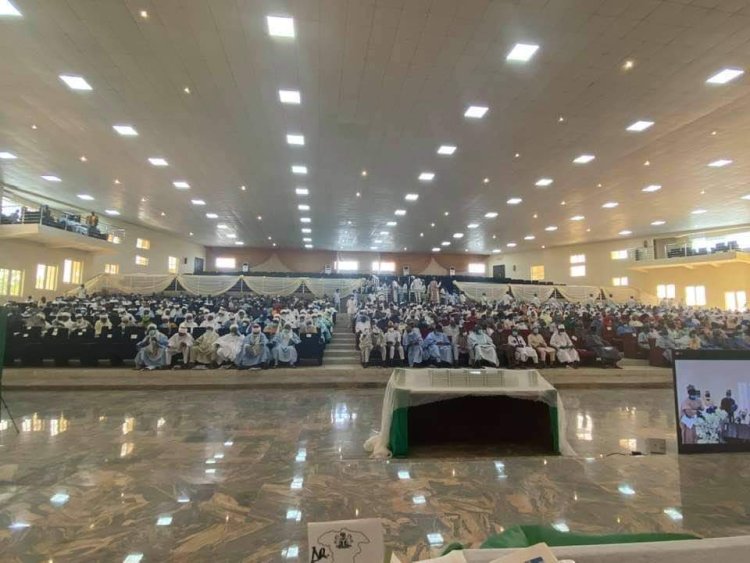
It has been the wish of every administration since Bello to settle the nomadic Fulani.The dream of Bello to urbanize the pastoral Fulani has remained partially fulfilled. Towns have been built according to that model. The same dream of settling the pastoralists by the colonial administration and the defunct Northern Regional government could not materialize. The challenge remains. Nomadic Fulani still abound and there is no end of their influx from other countries. The Bororo’en who have become subject of persecution and crime today can only settle if they are guaranteed their continued peace and prosperity in grazing reserves and other similar facilities. “The problem of how best to achieve this sedentarization is till of great magnitude,” wrote Dunbar in 1968.
Livestock remains a national asset which government must invest in as it does for other sectors such as manufacturing, trading, banking, agriculture, etc. Pastoralists should also modernize, minimize movement, submit to government control and pay taxes before the services they would enjoy can be sustained for the while that remains.
However, with an ever increasing population and the relevance of living in civilization, the end is the same for the nomads—whether they are the scattered Tuaregs of Sheikh Jailani or the cattle-loving Fulani of Caliph Muhammadu Bello. Sedentary life will ultimately overcome the desert Bedouin and forest pastoralist. As reported on the authority of Anas in Abu Dawud, the Prophet said, “people will settle in towns.” Then the Bello model of maintaining a few urban cattle would be the only option left to his Fulani tribesmen.
Sokoto
1 November 2021








